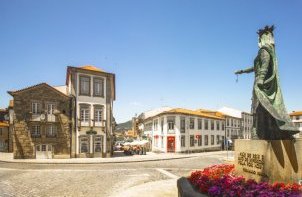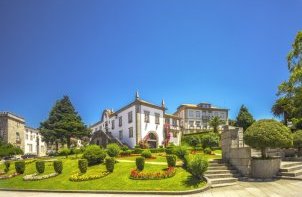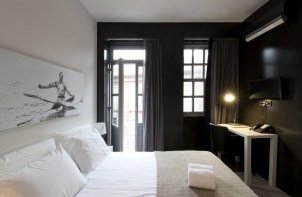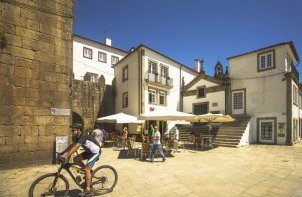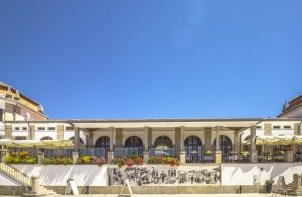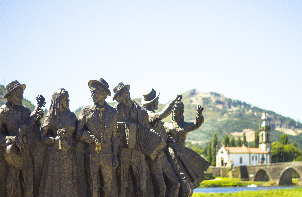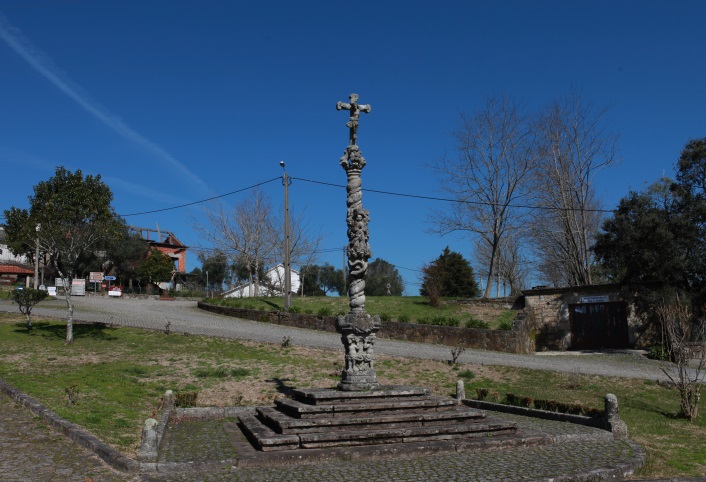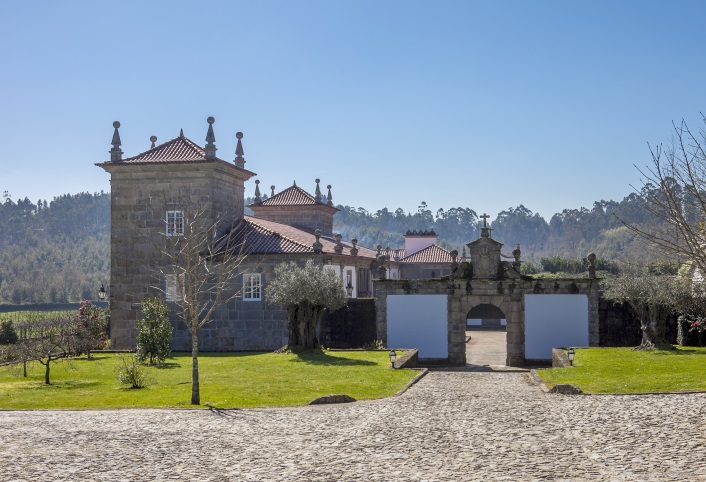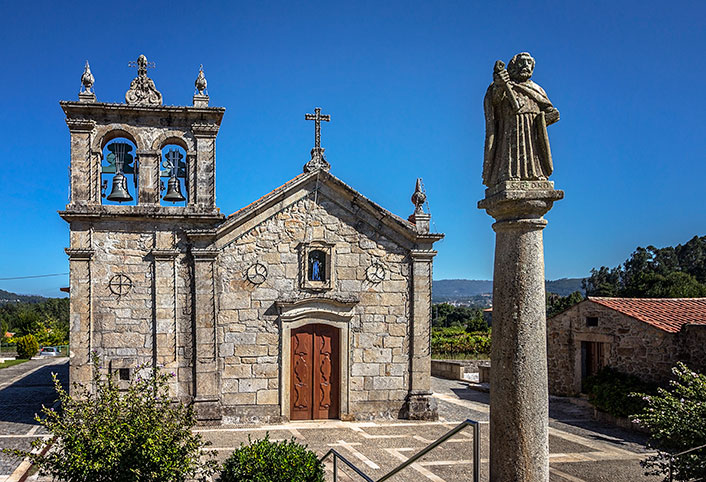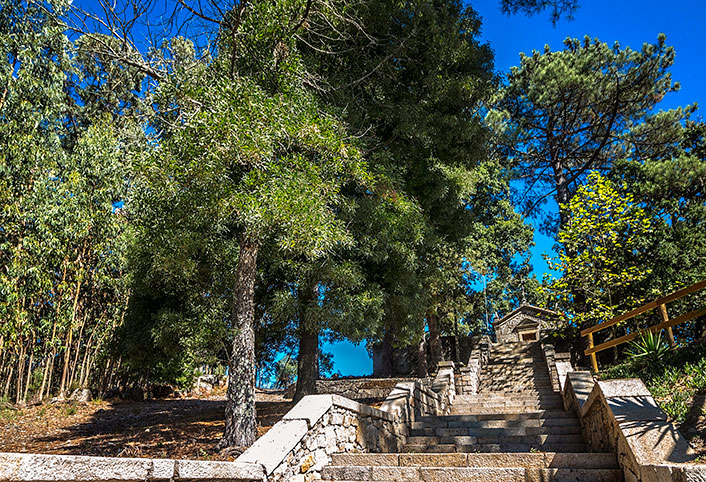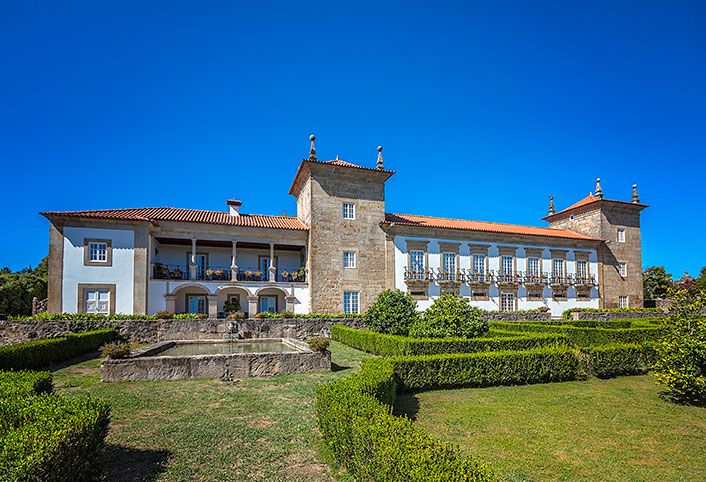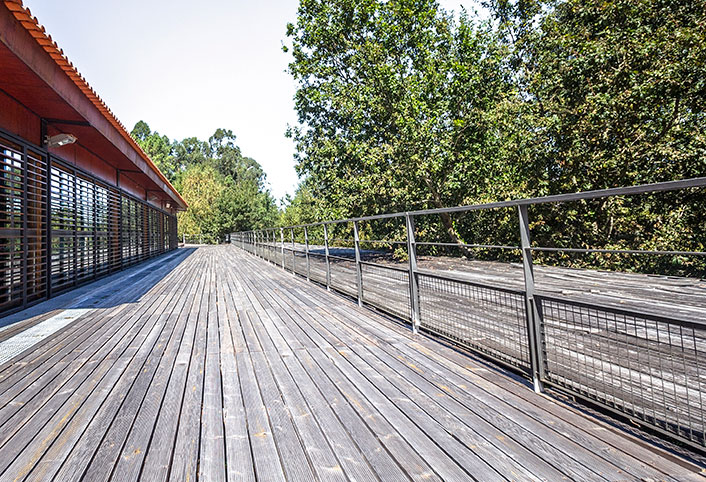The Calvary Cross Route
The Calvary Cross Route is a footpath called the short route. The respective markings and signs conform to international standards. The course is developed in the protected area (PA) of Bertiandos and St. Pedro de Arcos’ pond with mandatory passage alongside the Calvary Crosses of St. Pedro de Arcos and Fontão.
We start at the Environmental Interpretation Centre (EIC) of the PA, up towards the car park. Turn left and then immediately to the right until we find a paved road that we must follow, through the backyard of the Lage farm, until we reach the center of St. Pedro de Arcos.
We highlight the Calvary cross, one of the most beautiful during the reign of King John V [1706-1750]. It has a shaft in Solomonic style, in the middle of which a crowned image of Our Lady is carved as well as a series of vegetal elements. In the chapiter there is an image of Christ crucified. Worth mentioning is also the beautiful parish church, dominated by XVII and XVIII century elements. In the churchyard, there are two medieval graves that corroborate the existence of a medieval temple, probably the site of the church, which also contains the remains of Romanesque art. Opposite and across the road, enter the Calvary that gives access to the Chapel of St. Sebastian, XVII century composed of fourteen crosses, where the plinths of the oldest pillows are decorated with crossbones and a skull.
Taking up the route and following these directions, we head to the Chapel of Our Lady of Needs, a Catholic church dating back to the XVIII century. In front of the chapel is a niche with an Our Lord of Steps and in the churchyard a niche of Our Lady of Needs, built in 1727, which is like a small chapel-shelter that has at its apex, plinth and cross, and a barred window with visibility into the interior. In this place is the Shrine of the Souls in Limbo, who have a painting of Our Lady of Carmelite with the Child Jesus on her lap.
The path of the chapel leads to the urban core of Fontão. We find the Manor Estate, built in the XVIII century which is remarkable for its tower of three floors. The gateway of the estate has two seventeenth-century coats of arms used by the Marquises of Terena of Condes of Monfalim. We follow to the left to Our Lady of Remedies’ Chapel. Here we find the parish church of Fontão with a facade facing the XVIII century Calvary cross which has a fluted shaft and as that of St. Pedro d'Arco’s, the center features an image of Our Lady. It ends with a composite chapiter surmounted by a cross.
We follow the route signs to the lot of St. Christopher, where a chapel was erected in the XVII / XVIII century and dedicated to the same saint. On the top of the hill there are archaeological remains indicating occupation during medieval times. From here we descend until we enter the Municipal Road 525-1. Turn left towards the beginning of the route point, and, on the way we are faced with a beautiful perspective of the Lage Manor. Founded in the XV century, it consists of a central body between two towers, with architectural elements of the eighteenth century. Nonetheless the occupation of the land is previous to this era as there are traces of tégulas, a species of sea snail, from the Roman / Medieval periods.
Download the file:


